Mastering Content Distribution: A Step-by-Step Guide
Content marketing is still one of the most powerful tools you have in your marketing toolbox. In the era of information overload, standing out and becoming visible is hard. It’s no longer about how good your content is; it’s about how creative you are about sharing it with the world.

So you wrote and published an article.
Great! What’s next?
Of course, you would like it to reach as many people as possible, bringing new traffic to your website and boosting your visibility.
Not a bad plan at all: it’s no secret that exceptional content marketing can be a great business card for your service or products. It fuels your SEO, builds trust positioning you as an industry expert, and gives you valuable insights into your audience’s preferences and behaviors. On top of that, it also attracts people interested in buying what you have to offer, and your new traffic can easily be converted into valuable leads and later, loyal customers.
But here’s the bad news: this plan also works for hundreds of thousands of other people and businesses.
Your job then is to become the one that stands out among the crowd. And if you are in the marketing-related niche, oh boy, you should get yourself ready to work real smart for that. Even if your content is outstanding, it is practically worthless if it doesn’t reach the right people.
So how do you ensure that your article gets exposed to the relevant audience?
After months of trying to figure out how to make our articles reach the right people, we prepared a step-by-step guide to help you make it happen, too.
In this article, we will reveal our well-kept secrets to building an effective content distribution strategy. We will guide you step-by-step through the process that includes planning, distributing, measuring, and proper adjusting of your strategy. You will also learn how to avoid common mistakes while making your way to the top of the Google search.
Let’s dive in!
1. Plan the Whole Thing
If you thought you were ever going to get anywhere, including the top of the Google results, without planning, you are fooling yourself.
Creating a solid plan with tangible goals and action steps is the most important thing that will help you succeed. It’s no news, but it seems like not many folks are making use of this knowledge and end up wasting time and effort with little to no results. You surely don’t want that.
Below is the rough draft of how your plan could look like:
Find Your Target Audience
Start with thorough research. To whom you are addressing your content? And make no mistakes — it’s not only about who your readers are, but where they are! Look for specific places; don’t try to speak to the masses. If you are writing for the marketing experts, identify specific niches and target the communities and groups gathered around the topic.
Choose the Right Time
If your article goes out at 10 AM, but the majority of your audience is on the other side of the globe where the clock indicates 3 AM, you might be voluntarily losing tons of cash and hundreds of new opportunities. Timing is everything. In business, in life and also in your content distribution strategy. Do it wrong, and you can wave goodbye to new potential readers (and customers!).
Ask yourself: when does your audience have the time to read your piece? However, if you don’t want to do the research yourself, we can safely recommend this article on the best posting times.
Create and Delegate a List of Tasks
Rule number one: stay organized… or bear the consequences of chaos and fail miserably. We recommend using tasks management tools and apps, such as Asana or Trello to track your progress. If you want to keep it simple — stick to an Excel file. Tracking your progress effectively is especially important when there are several people responsible for the content distribution.
Measure
How do you want to improve your results, if you don’t know what works and what doesn’t? Measuring your efforts is a must. It’s the key to making sure that each of your next distributions campaigns will bring you better results than the previous one. Don’t overcomplicate — Google Analytics is the best way to see which methods brought the biggest ROI. Also, don’t forget about the social media stats available in the “analytics” section to see which platforms have the potential to bring you new, relevant traffic.
Adjust
After you checked out your stats, it’s time to draw the conclusions and take appropriate corrective actions. Note down what worked and what didn’t, where would you like to invest more of your time and effort for the next time, and which methods should be abandoned and forgotten. Make your amends if the distribution is still in process and make sure to follow (and measure again) your adjusted strategy for the future pieces of content.
Follow-up
Don’t assume that a one-time effort will yield the results you wish for. Re-visit your steps, make sure to always follow-up if the engagement isn’t as expected. Be persistent, but not pushy (e.g., when sending emails to influencers or promoting on social media groups). And to win big — learn from each step of the way. Always.
Seems simple, right? Well, now, when the article is ready and the distribution plan is drafted, let’s get creative and learn how to execute it and get outstanding results.
In the following sections, we will explain the process of the article distribution in detail, providing you with the suggestions of the exceptional methods of content promotion that you probably never heard of, or at least — never combined. We will start with the places where you can promote your article, show you the common mistakes you can avoid and explain how to adequately measure and adjust your strategy.
Let’s start!
2. Distribute
By trials and errors, we’ve found the most effective and easy to implement distribution strategies that brought tons of traffic to our blog. Let’s take a look at them!

Free Submission Websites
Yep, they are still one of the most effective ways to get your content distributed. The secret here is to know to which websites you should submit your piece. We tried many of them, and sometimes the process of submitting it is so complicated and the results so miserable.
Be selective and make a list you check and follow-up with. Below are our favorite websites which brought us tons of new visitors.
- Zest.is is probably our most significant discovery of the year. It is an easy to navigate platform where you can suggest the URL of the article that caught your attention. What we love the most is the quality of articles allowed to be published there.
Zest.is has a team of people reviewing each of the submitted URL individually and deciding if it’s the right fit for the website. The range of topics includes only marketing-related content.
Once an article does get an approval — expect a wave of fellow marketers rushing to check out your masterpiece. We surely recommend and are excited to see the platform grow.
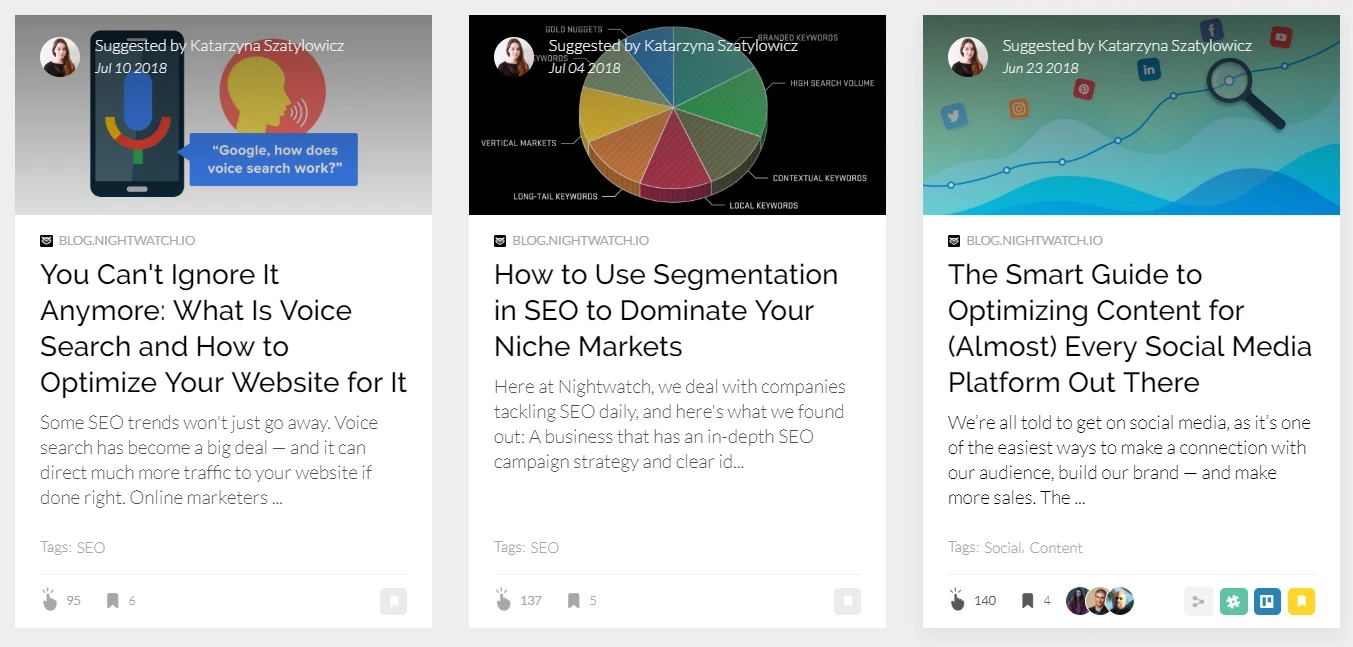
Distributing articles through Zest.is
- Ah, that time we made our dream come true and got on a front page of Hacker News gaining 102 upvotes and over 70 comments… Oh, and did we mention 7000+ page views within two days?

Distributing articles through Hacker News
Yeah, Hacker News is definitely a website you want to submit your article to if it’s tech-related (more generic article like ours about remote employees would work too if it’s relevant). If you are fortunate enough to get on a front page, you will be rewarded with huge traffic and hence, boosted visibility. Give it a try.
- Mix is a platform to discover. We would lie saying that many of our new visitors found us through this site. However, it turned out to be an excellent tool for finding new connections that we used in our Twitter and influencers outreach described below.
And the submission process is quick and easy, so we always make sure to upload our content to this platform. You never know who will read it.
- Readory is a simple site where you can submit your URL for other people to check out. It’s not very well-known, hence the engagement wasn’t what you might expect. Submit it in 10 seconds and forget it.
- Triberr is still in the testing phase, but we believe it can be a game changer for us. It’s new, quickly booming and the content seems to be carefully reviewed before it is out. Why don’t you give it a go and let us know how it went?
Twitter Outreach
We truly still cannot believe how Twitter outreach turned out to be a gold mine for us this year. We’ve already mentioned how we used Twitter DMs to grow our account significantly, and article distribution is another thing you can use it for.
People want to share good things. Especially those users who regularly tweet about the industry’s news. They don’t have time to publish two articles per day, but they still need to write tweets. Solution? Content curation! And that’s your chance to shine.
Here’s a quick Twitter DM field manual:
- Do a little digging and find people who might see your content relevant to their audience.
- Show them some real love and appreciation for the content they have produced. Don’t forget about the win-win rule, where to receive; you have to be open to give first.
- Don’t push or “sell” your content to them, but rather present it as something that their audience might find useful for themselves.


So plan ahead and reach out to them asking for a little favor. If done right, this can be the beginning of an awesome Twitter friendship where you both benefit from sharing the content.
Influencers Outreach
Rule number one: don’t be shy.
You mentioned their article as one of your sources? Let them know. You would like to know what they think of your masterpiece? Let them know. You feel like their audience would die to read your article? Let them know.
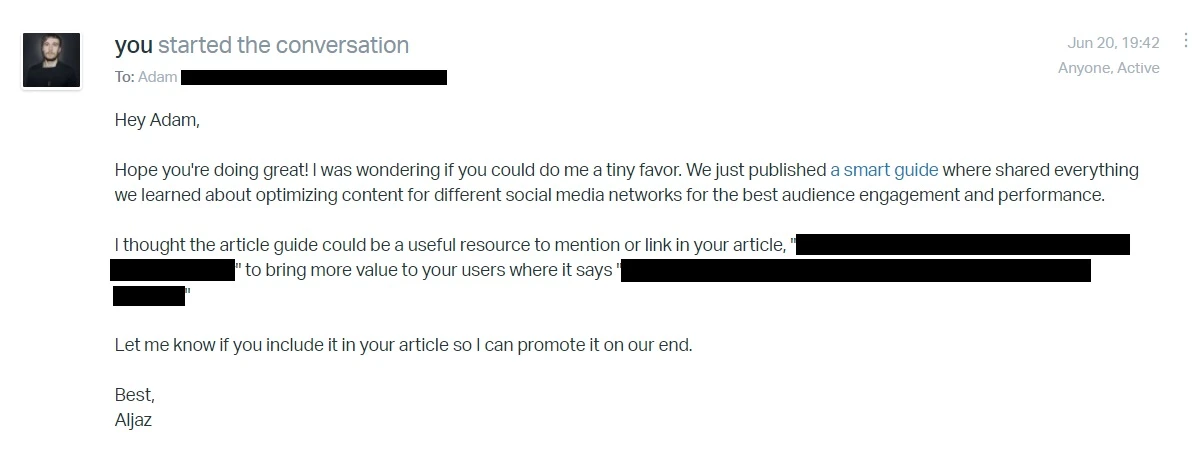

 

Reaching out to popular people in your industry is easy, cost-effective and can bring you a huge ROI. Be creative, research, remember to give first (apart from providing them with your brilliant content), and start drafting your email.
Slack Communities
But Slack is a communication tool, so what do you mean?
Alright, we agree that this was not our first choice when it came to exploring new channels for articles distribution. But we could have missed out on high-quality new traffic and excellent feedback had we not decided to give it a shot.
You see, slack communities such as Growmance, BigSEO, or Marketers Chat are a place where pro-marketers hang out. And they can appreciate good content. Sharing it without being spammy is easy, too — each of them has a special channel related to the promotion.
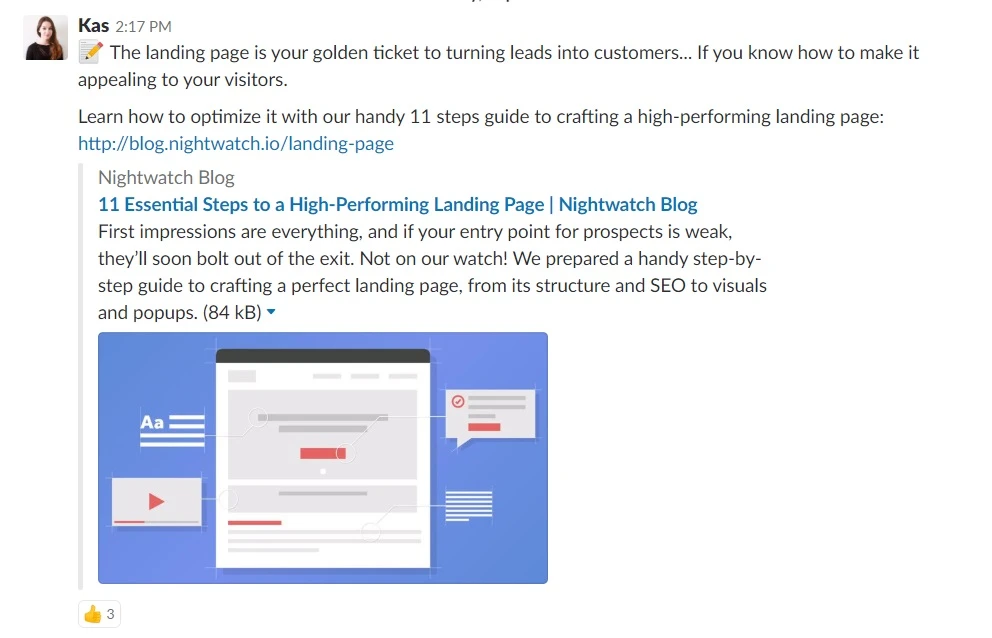

Let us be honest here: the chances of your article going viral using only Slack for promotion might fail miserably, but if you are looking for smaller in numbers yet returning and relevant traffic, you should give it a go.
If you acquaint yourself with fellow marketers, you might also discover new collaboration opportunities, such as guest posts or link exchanges, so… what do you have to lose?
Email Outreach
Ah, good ol’ email. You would think that nobody opens them anymore, huh? Well, as they say — innovation is about making boring things great again, so maybe it’s time to pimp up your email marketing a bit.
Emails are still a great way to distribute your content (if you do it right, meaning: creatively).
The example of emails we can’t resist to open? Neville Medhora from the KopywritingKourse does the job pretty well.
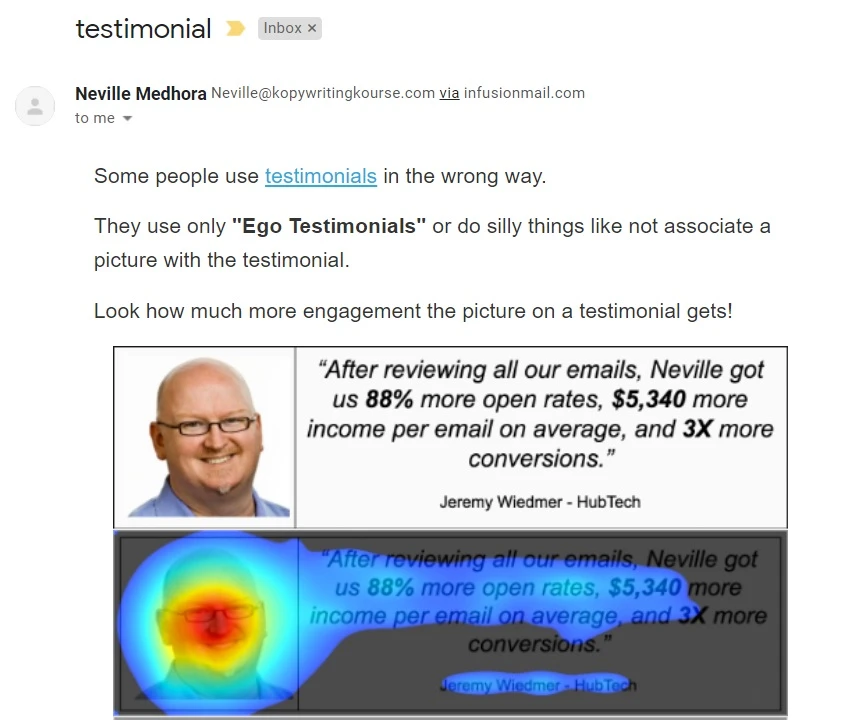

The subject line is usually short and intriguing, the email itself seems very personalized, and on top of that, it is full of visuals and small bites of super useful content. Neville writes in the way which makes us think that he is solving our problems (e.g., presenting testimonials in the right way). This usually makes us want to read more and go to his blog post to look for answers.
Simple, but not easy.
The key lesson here? Experiment and test. Don’t give up on emails just yet. Perhaps change the format or make the subject line stand out (our Is Topic Clustering the New Black of SEO brought awesome CTR), start writing an intriguing copy and click “send.”
Additionally, with the use of an email subject line tester tool like Refine, you can test the performance of your subject and receive recommendations to improve it.
3. Don’t Make These Mistakes
No Plan = Chaos
If you got that far, you probably realized that plan is everything. If you don’t plan, you can’t measure, let alone, adjust your strategy. What if planning isn’t your favorite thing to do?
Delegate.
Do whatever you need, but make a plan before you take any action.
“Take” Attitude
Your piece is excellent, and the whole world should see it. That’s cool. But the moment you forget that to receive (attention, engagement, visibility), you have to give first, you are most likely heading in the wrong direction.
Twitter marketing specialist Keith Keller emphasizes the importance of giving and promoting other people’s content on different platforms:
I feel that the best idea is to constantly experiment with the various platforms.
For me, Twitter & Linkedin are working best but it may be different for you. There are loads of great articles on what people are trying so don’t be afraid to have a go at some of the strategies.
My favorite technique is something I learned from Gary Vaynerchuk: “Give - Give - Give - Then Ask.” I always try to be of service first before asking for anything in return.
Sorry to break that to you, but you must put some effort first and only then reap the benefits of your work. So make sure you that you make connections, promote other people’s work and then reach out to them asking to help you out. Trust us, if done well — it works miracles.
Make sure to keep your contacts organized, too, like Neville Medhora does:
My most effective distribution strategy is having a command center for listing out who you know that will help distribute your articles.
This can be friends who are bloggers, Facebook groups you’re in, forums you’re part of, company blogs you’ve worked with, etc… Simply having these listed out (like I do here on this Doc makes it easier to promote when you’ve got an article ready to go!
Targeting Wrong Group
Pretty obvious. If you don’t know your audience, you can forget about being able to deliver the content they want to read. Time is precious; nobody wants to spend it on things they don’t care about.
You think you got this one covered? Double check (for your own sake). It turns out we often assume we KNOW our target audience and their needs only to discover later that we were mistaken all this time. Golden advice? Ask.
Bad Timing
If you know your audience well, publishing your post at 1 AM their time isn’t the smartest move. It refers not only to the platform your original piece appears, but also all the places where quick reaction (engagement like upvoting) plays a significant role in deciding if your piece will go viral or get drown in the vast ocean of other articles.
Be smart about it. Do your research. And once again — plan. Check industry news and trends, check with your audience, check if the time is right.
No Diversification
Let’s face it — relying on a single way to article distribution — no matter how effective it was in the past — is just foolish. We live in the times where attention is like gold — precious and rare.
Do your research, include many options in your plan and execute them until one of them works. Diversify, you never know when one of the things you didn’t expect clicks, and boom, your article is on the front page of the Hacker News. Give it a go.
4. Measure and Adjust
Okay, let’s say you went through all the effort of planning and executing your article distribution strategy. Here at Nightwatch, we plan and divide the tasks using Asana and Google spreadsheets. It helps us to keep track of all the steps along the way.
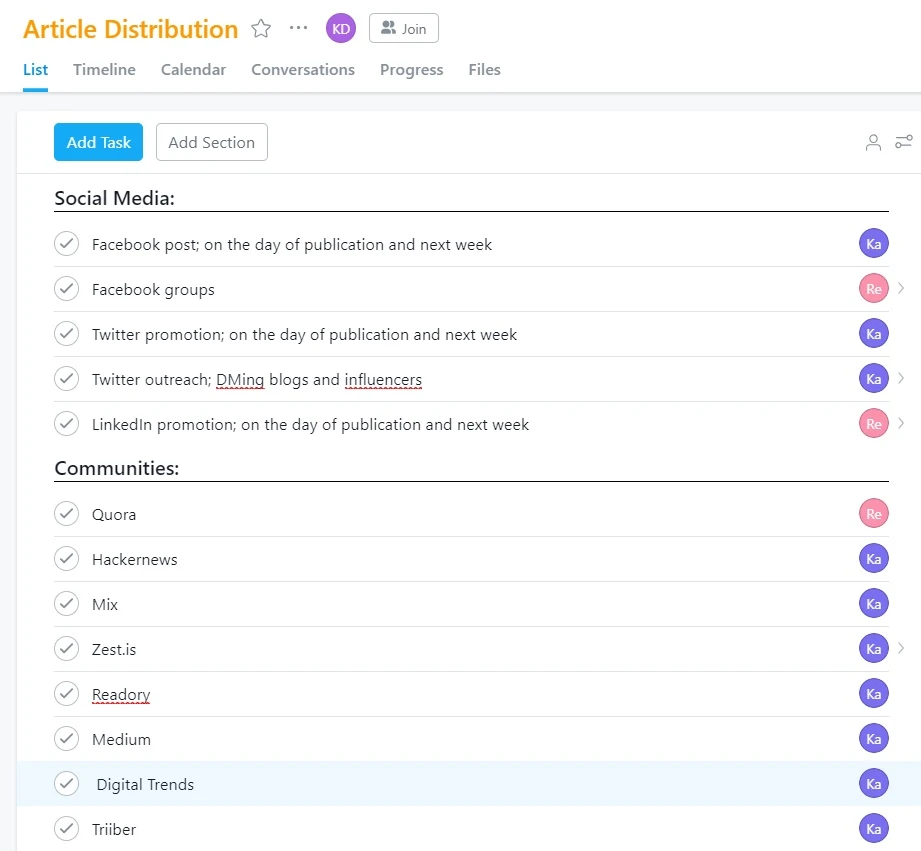

By now it might feel as if the job is done and another article is waiting in line to be published, but… how are you going to know what worked and what didn’t?
How are you going to evaluate the resources you have to allocate for your next promotion?
How will you know what exactly your audience’s response was?
Here you go: You need the right tools to measure and analyze your efforts.
With Nightwatch, we can easily track our progress in articles distribution. We can see if the free submission websites approved our link, and whether it is follow or no-follow, and how does link exchange go:
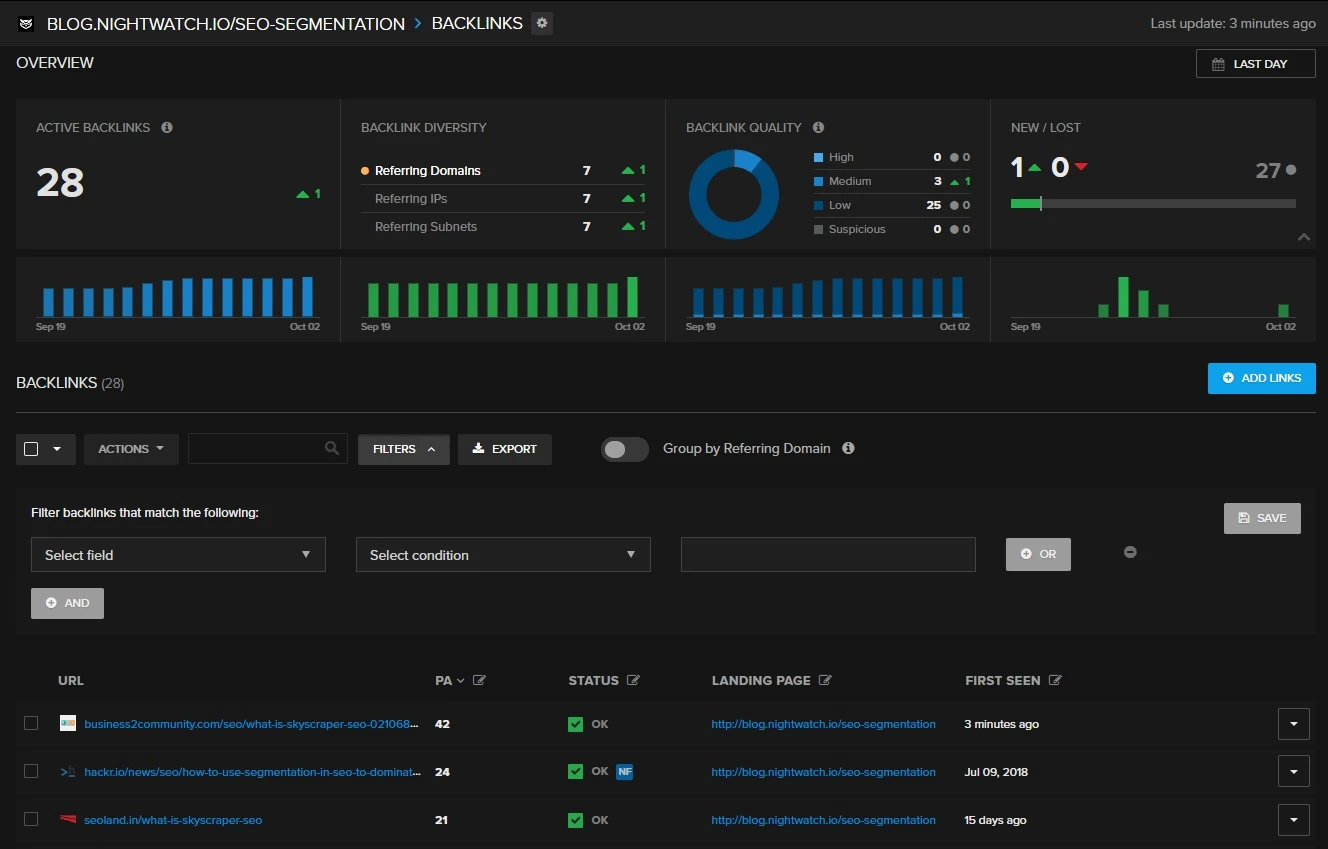

When measuring traffic sources and users’ behavior, we use Google Analytics. Here, we can see which websites brought us the biggest amount of traffic and how our readers reacted to our content — bounce rate and time spent on the website are usually good indicators.
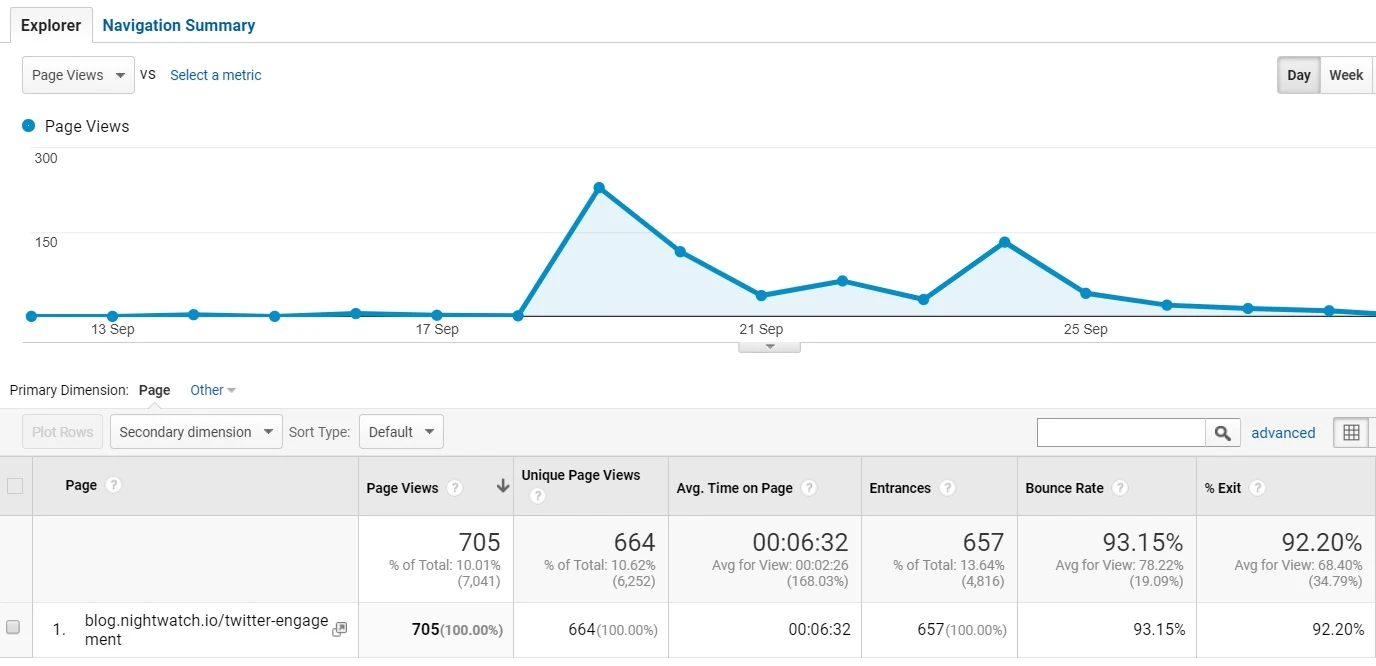

Remember: numbers don’t lie. Measuring your progress is as important as planning in detail your next strategy.
Looking for more tools? Ivana Taylor, the founder and a publisher of DIY Marketers, shared with us her expert advice on optimizing article distribution:
People are always asking me how I create so much content and distribute it so consistently. I respond by saying that I don’t create as much content as some and as for article distribution — it’s a system.
It needs to be a machine that runs — and runs regularly.
Of course, that’s difficult to do manually — and that’s why my recommended tool is CoSchedule (because that’s what I’ve been using for years). There are, however other tools out there that folks might like better such as DivvyHQ or forMarketer — each tool has its strengths and weaknesses cc just depends on your needs. But one thing they all share is the ability to customize and program your article distribution so that it’s an integral part of your content marketing strategy.
Final Thoughts
Building an effective distribution strategy for your content marketing is not bread and butter. But if you are in for the long haul, it inevitably gets easier with each published piece.
If you follow our suggestions and invest some time into researching and identifying your target audience, planning your execution, tracking, measuring and adjusting your strategy, you can win big.
Don’t let your content die unread and unappreciated: after being the pro-writer you must become the pro-marketer. Use our guide to design your own strategy and watch how your website is flooded with new, fresh traffic each day. It is possible.
Share this article with your fellow marketers and let us know what you think in the comments!
